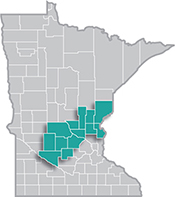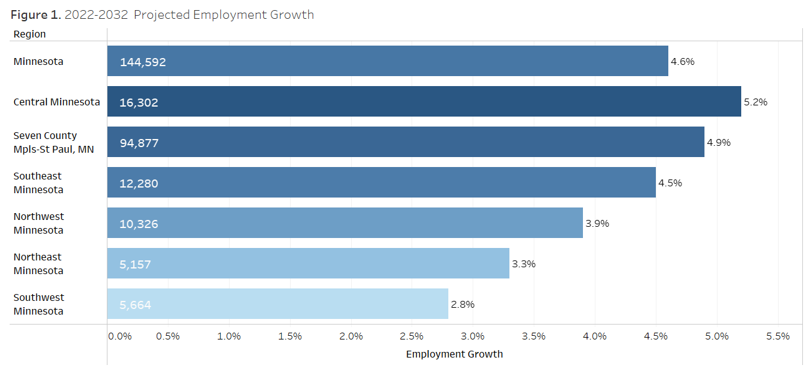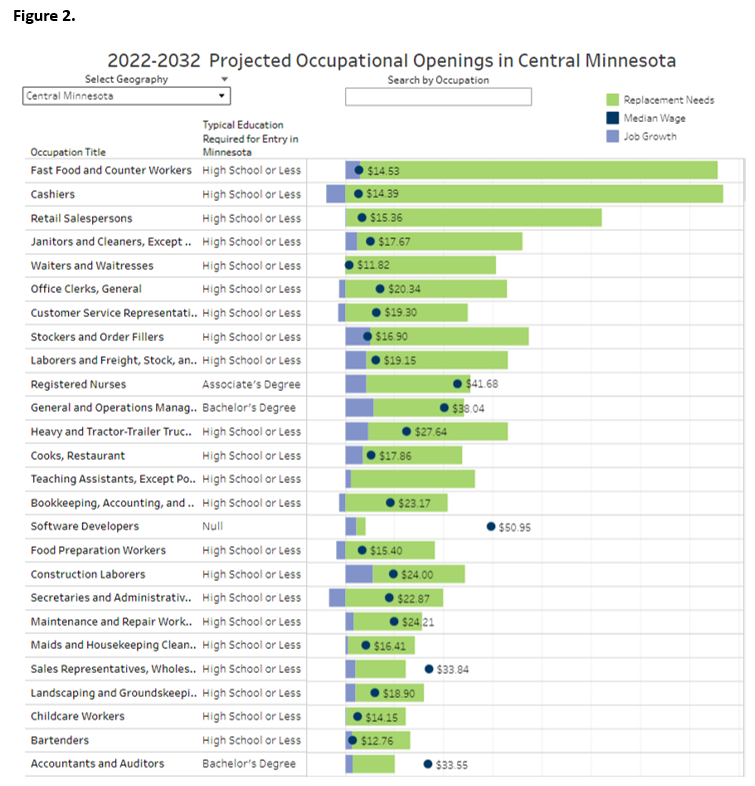 Central Minnesota is a manufacturing stronghold, with several global manufacturing firms operating there.
Central Minnesota is a manufacturing stronghold, with several global manufacturing firms operating there.
The region is especially well known for its expertise in food processing, printing, furniture manufacturing, appliances, machinery and heavy equipment manufacturing.
View our latest blogs on CareerForce. Want the freshest data delivered by email? Subscribe to our regional newsletters.
10/21/2024 3:40:08 PM
Luke Greiner
Central Minnesota is poised for robust job growth over the next decade, likely outpacing all other regions in the state. DEED's newly released regional Employment Projections forecast a 5.2% increase in employment by 2032. At that rate, the region is expected to add just over 16,300 new jobs, which would bring its total employment to above 332,000 jobs. Figure 1 shows how Central Minnesota stacks up against other parts of the state:

Looking at more detail in the Employment Projections, the types of occupations and education needed for the coming decade provides some insight into the subtle changes in the labor market. Below are some high-level takeaways at each education level for Central Minnesota:
Occupations requiring a high school diploma or less dominate the job market in terms of openings. These roles are typically entry-level positions with high turnover rates, explaining the large number of openings. Some examples include:
However, there are also numerous high-paying occupations such as supervisory and skilled trades that provide excellent pay and lifelong careers.
Several occupations requiring vocational training show promising growth and/or a significant number of openings in the region. These technical roles often offer stable employment and competitive wages, making them attractive options for those seeking alternatives to traditional four-year degrees:

Health care-related occupations dominate this category, but it also includes engineering technologists and technicians, drafters, police officers, paralegals, and computer support specialists. These roles typically offer good pay and job security, reflecting the growing demand for health care services in the region and the state.
Management and professional roles are prominent in this category, often offering higher salaries and career advancement opportunities. These occupations are also concentrated in the educational services, business and financial operations, and computer and mathematical fields.
While having fewer openings overall, graduate-level occupations show strong growth percentage-wise. These highly specialized roles typically offer high salaries and are crucial in fields like healthcare and education.
While there are opportunities at all educational levels, the majority of job openings will be in entry-level positions with lower educational requirements and wages. However, it's important to note that while formal education may not be necessary, many of these roles still require specific skills, certifications, or on-the-job training to achieve higher pay levels. Regardless of educational attainment, there are—and will continue to be—many opportunities for workers at every level of education.
Contact Luke Greiner, Labor Market Analyst, at luke.greiner@state.mn.us